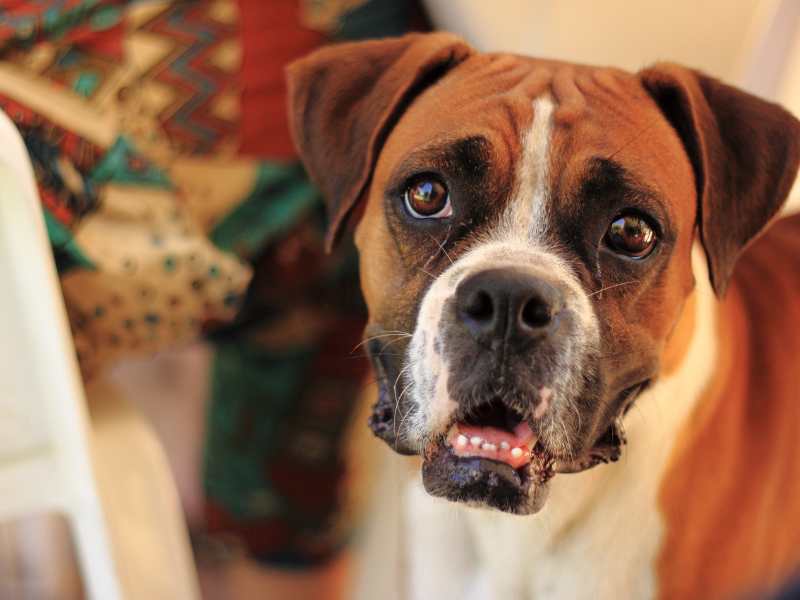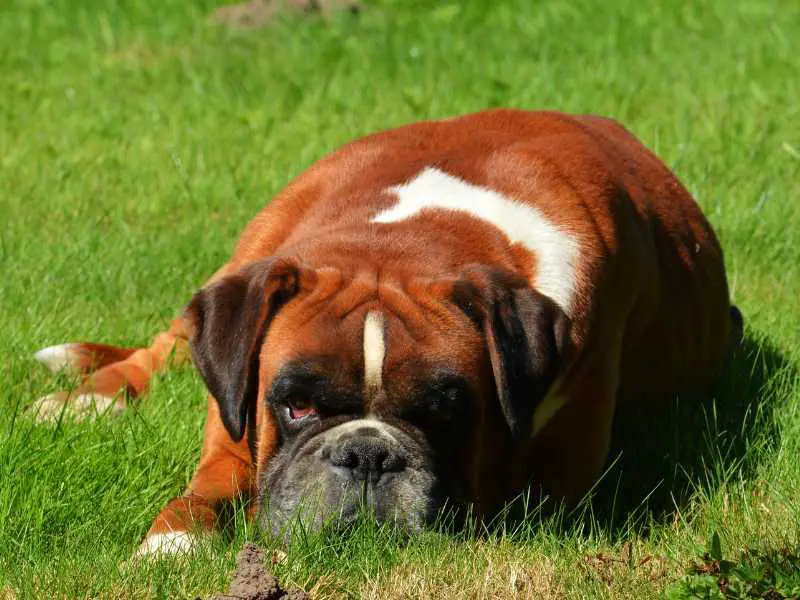Welcome to our guide on “Seasonal Flank Alopecia: Why Is My Boxer Losing Hair?” A Boxer’s coat plays an important role in their overall health and well-being. In this guide, we’ll look more into how important it is to keep a Boxer’s coat healthy.

One of the common issues Boxer owners may face is Seasonal Flank Alopecia. In this beginning section, we’ll explain why a Boxer’s coat health is essential and introduce you to the problem of Seasonal Flank Alopecia. We’ll explore what it is, why it happens, and how you can best address this concern.
Join us on this informative journey as we reveal the mystery behind Seasonal Flank Alopecia and discover how to keep your Boxer’s coat healthy and vibrant. Your furry friend deserves the best, and this guide is here to help you achieve that.
Understanding Seasonal Flank Alopecia 🌿
What Is Seasonal Flank Alopecia?
Seasonal Flank Alopecia is a skin condition that causes hair loss, mainly on a dog’s sides and back. This condition gets its name because it tends to happen during the winter months. It typically occurs during the winter months, although the onset can vary1.
Dogs affected by this show patches of hair loss without other major signs of skin disease. Breeds like Boxer Dogs, Airedale Terriers, English Bulldogs, French Bulldogs, and Schnauzers are particularly likely to get this.
Causes and Triggers
While the exact cause of Seasonal Flank Alopecia remains unclear, it is believed to stem from an abnormal reaction of hair follicles to the natural hormonal changes linked to changing day lengths.
Hormonal imbalances, genetic factors, and environmental influences may also play contributing roles. Certain breeds, notably Boxers, Bulldogs, and Airedales, are particularly susceptible to Seasonal Flank Alopecia.
Symptoms and Identification
Seasonal Flank Alopecia shows through noticeable hair loss, changes in skin color, and itching. To diagnose this, veterinarians must rule out other potential causes of hair loss. This typically involves a thorough physical exam and may require a skin biopsy.
If you suspect your Boxer may have Seasonal Flank Alopecia, it’s essential to contact your veterinarian promptly. Early intervention can help reduce symptoms and prevent the condition from worsening.
Tackle Boxer Dog Skin Problems with Expert Solutions and Treatment Guide. Ensure your Boxer’s skin health with our trusted advice.
Treatment Options 🩹

Natural Remedies
For Seasonal Flank Alopecia, natural remedies and home care methods play a crucial role in managing the condition. These approaches include maintaining regular grooming, ensuring a healthy diet, and incorporating supplements like Omega-3 fatty acids.
Omega-3 fatty acids are known for their potential to enhance skin and coat health while reducing inflammation. Another natural remedy involves using coconut oil, which may aid in regenerating lost hair.
Medications
Melatonin, a medication, can be used in the management of Seasonal Flank Alopecia in dogs. This treatment option helps regulate the dog’s hair growth cycle, ultimately promoting hair regrowth. It’s important to note that while side effects of melatonin are rare, they may include symptoms such as fatigue, stomach upset, and changes in appetite.
To ensure the best outcome, strict adherence to your veterinarian’s recommended dosage and treatment plan is essential when using melatonin or any other medication.
Other Treatment Approaches
Alternative therapies such as acupuncture and herbal remedies are sometimes explored for managing Seasonal Flank Alopecia. However, it’s crucial to recognize that the effectiveness of these treatments is not firmly established. Consequently, it is of utmost importance to adhere to the treatment plan recommended by your veterinarian.
If you suspect your Boxer has Seasonal Flank Alopecia, promptly reach out to your veterinarian for guidance and a tailored treatment plan. Early intervention can effectively manage symptoms and prevent the condition from worsening.
Preventive Measures and Care 🏡

Managing Sun Exposure
To protect your Boxer from the potential worsening of Seasonal Flank Alopecia due to sun exposure, consider these preventive measures:
Limit your Boxer’s outdoor activities during the sun’s peak hours, typically occurring between 10 a.m. and 4 p.m. This helps reduce their direct exposure to the sun’s intense rays.
Additionally, provide shaded areas where your Boxer can retreat during outdoor playtime, along with access to cool, fresh water to prevent overheating. For added protection, consider investing in protective clothing and accessories such as hats, sunglasses, and UV-blocking shirts designed for dogs.
Dietary Considerations
Nutrition plays an important role in maintaining a healthy coat and skin for your Boxer. To enhance skin health and manage Seasonal Flank Alopecia, ensure your Boxer enjoys a balanced diet. Moreover, consider incorporating supplements rich in Omega-3 fatty acids into their diet.
These supplements can significantly contribute to improved skin and coat health while helping to reduce inflammation. Nevertheless, it’s advisable to consult with your veterinarian to determine the most suitable diet and supplements tailored to your Boxer’s specific needs.
Regular Vet Checkups
Routine veterinary visits are essential for the early detection and effective management of skin problems, including Seasonal Flank Alopecia. During these visits, your veterinarian can closely monitor your Boxer’s skin and coat health, promptly identifying any issues or changes.
They can then recommend necessary preventive measures or treatment options. Regular checkups play a vital role in ensuring your Boxer’s overall well-being and mitigating the impact of Seasonal Flank Alopecia.
Master Boxer Dog Weight Management with Our Comprehensive Owner’s Guide. Keep your beloved Boxer healthy and happy with expert advice.
Living with a Boxer Affected by Seasonal Flank Alopecia 🐶

Seasonal Flank Alopecia, though not physically uncomfortable for your Boxer, can present challenges in daily life. Here are some strategies for living with a Boxer affected by this condition:
Providing Comfort
Ensure your Boxer’s comfort during episodes of hair loss by creating a cozy and nurturing environment. Utilize soft bedding to prevent skin irritation and potential pressure sores.
It’s crucial to shield your dog from extreme temperatures, as exposure to harsh weather conditions can exacerbate the condition. By maintaining a comfortable living space, you can help alleviate any discomfort associated with Seasonal Flank Alopecia.
Emotional Support
Offering emotional support to your Boxer during the treatment process is equally important. Be patient and understanding, recognizing that the condition can be distressing for both you and your pet. Engage in activities that bring joy to your dog, such as playtime or short walks, to foster a positive bond.
Additionally, maintain open communication with your veterinarian. Don’t hesitate to seek guidance or clarify any concerns you may have about your Boxer’s condition and the recommended treatment plan.
Living with a Boxer affected by Seasonal Flank Alopecia requires a combination of proactive care, a comfortable environment, and emotional support. By adhering to the treatment plan, ensuring your Boxer’s comfort, and providing the needed emotional reassurance, you can help your dog lead a content and healthy life despite the condition.
Conclusion
In closing, Seasonal Flank Alopecia is a unique condition affecting Boxers and some other breeds. Understanding its traits, seeking timely veterinary care, and providing comfort and emotional support are essential for ensuring your Boxer’s well-being. Stay proactive in managing their coat health to keep your furry friend happy and comfortable.
